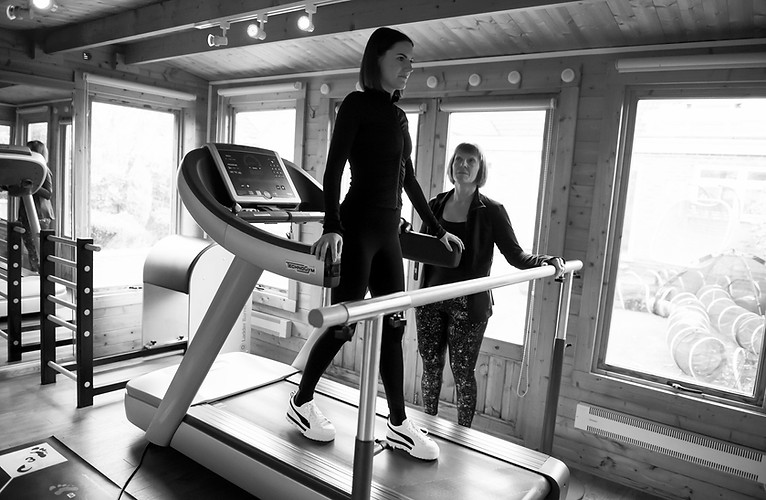
Methods used for Chronic Pain
A combination of STOTT Pilates and POLESTAR Pilates, using the larger equipment, such as the Reformer or Cadillac can be used, as these provide the most supportive positions to aid movement when working with chronic pain. The REFORMER and Cadillac are also very versatile and can also be used in many ways, such as seated, lying, kneeling, 4 point kneeling and many more depending on what feels the most comfortable and safe for you.
Combining these with exercises from The Walking and Running School can help to correct your walking, or eventually evening running technique, and 6 or 12 sessions are particularly beneficial once your pain levels have started to reduce.
Walking backwards is particularly effective for chronic pain as it re-educates the glutes to re-engage and this is one of the latest exercises used in the rehabilitation world!


How Pilates and other movement therapies can help Chronic Pain
Pilates and other movement therapies provide you with mind and body movement strategies that enables your body to release stress and tension build up and calm the nervous system, giving you the skills to move more efficiently.
If you suffer with chronic pain you will be living with pain that lasts for an extended period of time or occurs due to a chronic health condition. Chronic pain may be "on" and "off" or continuous, and as a chronic pain sufferer myself, I understand that it can affect people to the point that they struggle to work, eat properly, take part in physical activity, or enjoy life. Pilates and other movement therapies can provide you with helpful strategies to relieve and manage these symptoms.

How Pilates can help you if you suffer with chronic pain
Pilates and other movement therapies can help improve your overall body functionality by working not just the areas of pain, but also the other parts of the body which have been compensating for the pain.
It can also help restore confidence in your body and build a positive mindset by discovering new strategies for dealing with pain on a daily basis, for example working out links between long periods of sitting and increased pain levels or re-educating your body on how to stand, walk or sit properly to relieve pressure throughout the day.
Working together, a bespoke programme based on your pain points, will be created to start the path towards taking back control.
Session Options
Client Feedback
My Qualifications










